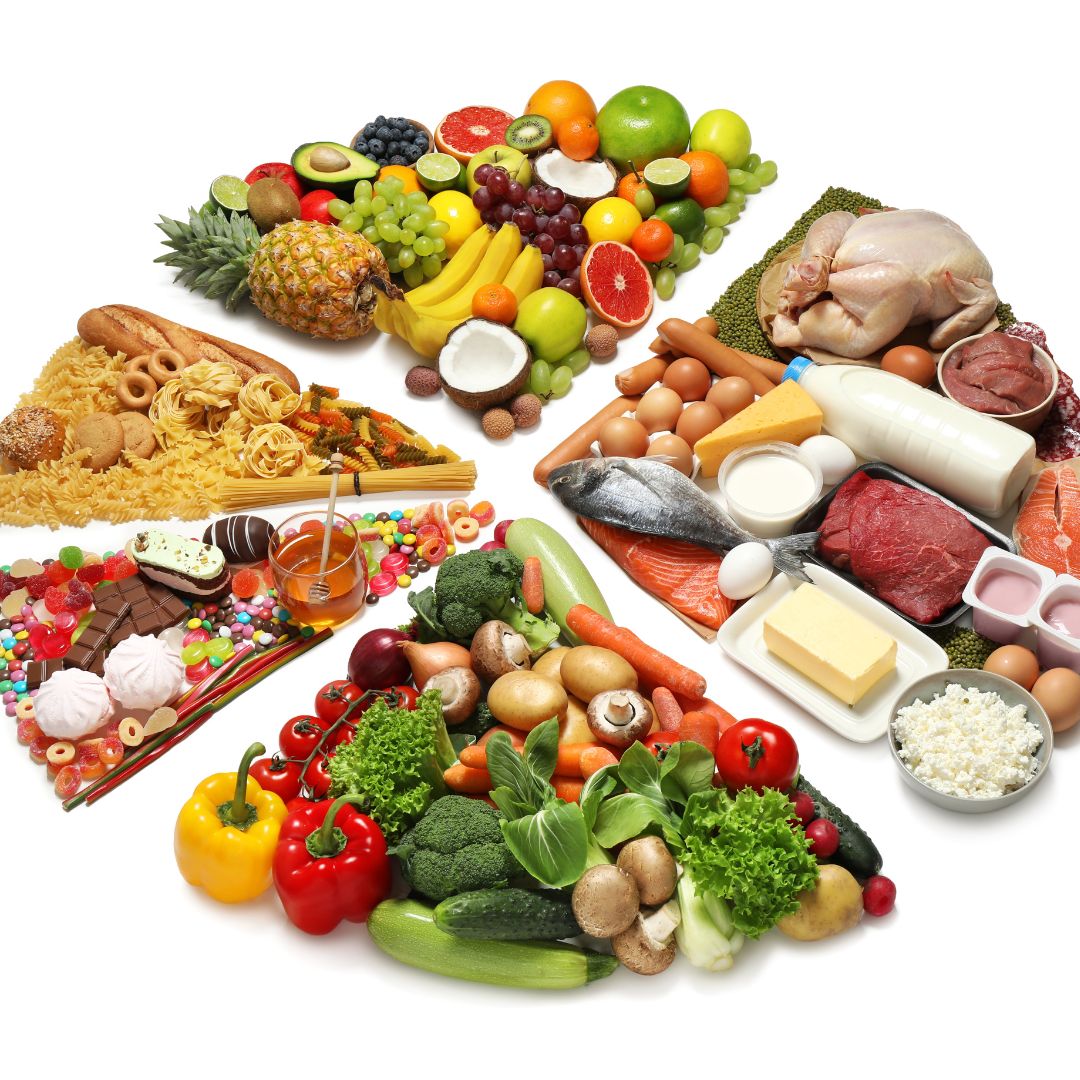A healthy diet is crucial for maintaining a healthy lifestyle. A balanced diet that includes all the essential nutrients is necessary for the proper functioning of the body. However, with so many food options available, it can be challenging to determine which foods are necessary for a healthy diet.
To make it easier, nutritionists have divided foods into seven main food groups, each containing different nutrients that are essential for the body. These seven food groups include fruits and vegetables, proteins, grains, dairy, fats and oils, sugars and sweets. A healthy diet should include a variety of foods from each of these groups.
In this article, we will discuss the seven main food groups in detail and their importance in maintaining a healthy diet. We will also provide tips on how to include these foods in your diet to ensure that you are getting all the necessary nutrients
Key Takeaways
- A healthy diet should include foods from all seven main food groups.
- Fruits and vegetables provide essential vitamins and minerals.
- Proteins are essential for building and repairing tissues, while grains provide energy for the body.
Fruits and Vegetables

Fruits and vegetables are essential components of a healthy diet. They are packed with vitamins, minerals, antioxidants, and fiber, which are all important for maintaining good health. According to the USDA, adults should aim to consume 1.5-2 cups of fruit and 2-3 cups of vegetables per day [1] [2].
One way to ensure that you are getting enough fruits and vegetables is to eat a variety of colors. Different colors of fruits and vegetables provide different nutrients. For example, orange and yellow fruits and vegetables are high in vitamin C and beta-carotene, while leafy green vegetables are high in iron and calcium. Eating a variety of colors can help ensure that you are getting a balance of nutrients.
In addition to fresh fruits and vegetables, frozen, canned, and dried varieties can also be a good choice. Frozen fruits and vegetables are often picked at peak ripeness and flash frozen, which can help preserve nutrients. Canned fruits and vegetables can be a convenient and cost-effective option, but it’s important to choose those that are canned in water or their own juice, rather than syrup. Dried fruits can be a good source of fiber, but it’s important to watch portion sizes, as they can be high in calories.
Overall, incorporating a variety of fruits and vegetables into your diet can help you meet your nutrient needs and support good health.
References:
- USDA MyPlate Fruit Group – One of the Five Food Groups. Available at: https://www.myplate.gov/eat-healthy/fruits
- Vegetables and Fruits | The Nutrition Source | Harvard T.H. Chan School … Available at: https://www.hsph.harvard.edu/nutritionsource/what-should-you-eat/vegetables-and-fruits/
Proteins

Proteins are essential for building and repairing tissues in the body. They also play a critical role in the production of enzymes, hormones, and other molecules. The two main sources of proteins are animal and plant-based foods.
Meat, Poultry, and Fish
Meat, poultry, and fish are excellent sources of high-quality proteins. They are also rich in vitamins and minerals, such as iron, zinc, and vitamin B12. However, it is essential to choose lean cuts of meat and poultry to avoid consuming excess saturated fat, which can increase the risk of heart disease.
Fish, especially fatty fish like salmon and tuna, are also rich in omega-3 fatty acids, which are essential for brain health and reducing the risk of heart disease. It is recommended to consume at least two servings of fish per week.
Beans, Legumes, and Nuts
Beans, legumes, and nuts are excellent sources of plant-based proteins. They are also rich in fiber, vitamins, and minerals, such as iron and magnesium. Beans and legumes, such as lentils and chickpeas, are also rich in folate, which is essential for healthy fetal development during pregnancy.
Nuts, such as almonds and walnuts, are rich in healthy fats, fiber, and protein. They are also a good source of vitamin E, which is an antioxidant that helps protect the body from damage caused by free radicals.
In conclusion, including a variety of protein sources in the diet is essential for maintaining a healthy body. Consuming lean cuts of meat and poultry, as well as fish, can provide high-quality proteins and essential vitamins and minerals. Plant-based protein sources, such as beans, legumes, and nuts, are also excellent options that provide additional health benefits.
Grains

Grains are an important part of a healthy diet. They provide essential nutrients such as fiber, B vitamins, and minerals such as iron, magnesium, and selenium.
Whole Grains
Whole grains are grains that contain the entire grain kernel, including the bran, germ, and endosperm. Examples of whole grains include whole wheat, brown rice, oats, and quinoa. Whole grains are a good source of fiber and can help lower the risk of heart disease, stroke, and type 2 diabetes.
According to the USDA, at least half of the grains consumed should be whole grains. Some examples of whole grain foods include brown rice, whole wheat bread, and oatmeal.
Refined Grains
Refined grains are grains that have been processed to remove the bran and germ, leaving only the endosperm. Examples of refined grains include white bread, white rice, and pasta. Refined grains are often enriched with vitamins and minerals, but they are lower in fiber and other nutrients than whole grains.
Consuming too many refined grains can increase the risk of heart disease, type 2 diabetes, and other health problems. It is recommended to limit the consumption of refined grains and choose whole grains whenever possible.
In summary, grains are an important part of a healthy diet, but it is important to choose whole grains over refined grains whenever possible.
Dairy

Dairy products are a good source of calcium, protein, and vitamins, which are essential for maintaining a healthy body. The two main types of dairy are milk and cheese.
Milk and Yogurt
Milk and yogurt are great sources of calcium, which is essential for strong bones and teeth. They also contain protein, vitamins B12 and D, and other essential nutrients. According to the American Heart Association, consuming dairy products can help reduce the risk of heart disease, stroke, and high blood pressure 1.
Yogurt is also a great source of probiotics, which are beneficial bacteria that can help improve gut health. When choosing milk and yogurt, it is important to choose low-fat or non-fat options to avoid excess saturated fat and calories.
Cheese
Cheese is a great source of calcium, protein, and vitamins, but it is also high in saturated fat and calories. Therefore, it should be consumed in moderation. When choosing cheese, it is best to choose low-fat or reduced-fat options. Some examples of low-fat cheese include feta, mozzarella, and cottage cheese.
Overall, dairy products are an important part of a healthy diet, but it is important to choose low-fat or non-fat options to avoid excess saturated fat and calories.
References:
- American Heart Association. (n.d.). Suggested Servings from Each Food Group. Retrieved from https://www.heart.org/en/healthy-living/healthy-eating/eat-smart/nutrition-basics/suggested-servings-from-each-food-group
Fats and Oils

A healthy diet includes fats and oils in moderation. Fats and oils are important sources of energy and provide essential fatty acids that the body needs but cannot produce on its own. They also help absorb vitamins A, D, E, and K.
Healthy Fats
Some fats are healthier than others. Monounsaturated and polyunsaturated fats are considered healthy fats. They can help lower cholesterol levels and reduce the risk of heart disease. Examples of healthy fats include:
- Avocado
- Nuts (almonds, cashews, pistachios, etc.)
- Seeds (chia, flax, sesame, etc.)
- Olive oil
- Canola oil
- Sunflower oil
- Soybean oil
- Fatty fish (salmon, sardines, etc.)
Saturated and Trans Fats
Saturated and trans fats are considered unhealthy fats. They can raise cholesterol levels and increase the risk of heart disease. It is recommended to limit the intake of these fats. Sources of saturated and trans fats include:
- Butter
- Lard
- Cream
- Cheese
- Red meat
- Processed meats (sausage, bacon, etc.)
- Margarine
- Shortening
- Fried foods
It is important to read food labels carefully and choose foods that are low in saturated and trans fats. Instead, choose foods that are high in healthy fats to maintain a healthy diet.
Sugars and Sweets

Sugars and sweets are not essential for a healthy diet and should be consumed in moderation. They are a type of carbohydrate that provides energy to the body but lacks essential nutrients. Consuming too much added sugar can lead to weight gain, dental problems, and an increased risk of chronic diseases such as type 2 diabetes and heart disease.
The American Heart Association recommends limiting added sugar intake to no more than 6 teaspoons (24 grams) per day for women and 9 teaspoons (36 grams) per day for men. However, the average American consumes much more than this, with some estimates suggesting an average daily intake of 17 teaspoons (68 grams) of added sugar.
It is important to distinguish between natural sugars found in fruits and vegetables and added sugars found in processed foods and beverages. Natural sugars are accompanied by fiber, vitamins, and minerals, whereas added sugars provide empty calories with little nutritional value.
To reduce sugar intake, it is recommended to avoid sugary drinks such as soda and fruit juice, limit consumption of processed foods with added sugars, and opt for whole foods such as fruits, vegetables, and whole grains that provide natural sugars along with essential nutrients.




